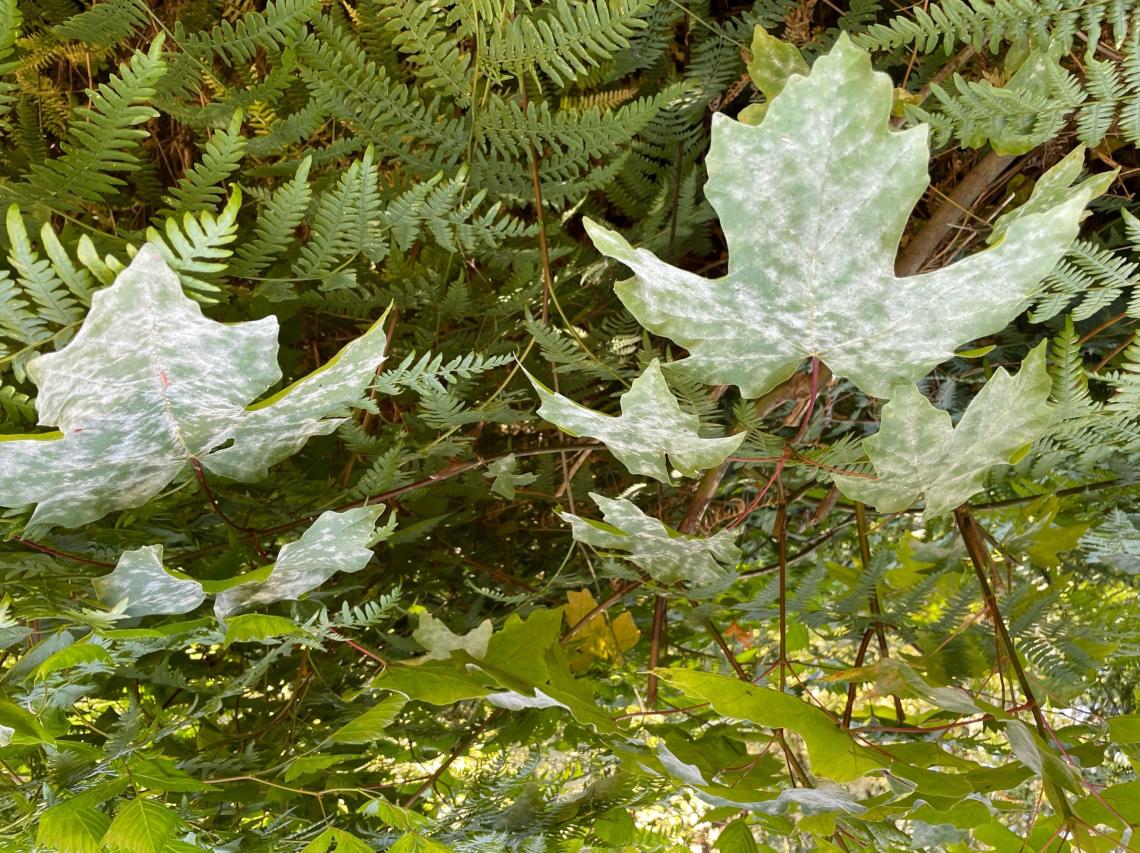Article by Deborah Seibel
Powdery mildew is one of the most widespread plant fungal diseases affecting everything from vegetable gardens to ornamental trees and shrubs. It thrives in a humid, warm, dry environment, and presents as white or grey dusty patches on leaves, stems and sometimes the fruit and flowers. 
If you happen to find powdery mildew in your garden, don’t panic. Powdery mildews may look the same on different plants, but they are host specific, meaning that powdery mildew on one type of plant won’t spread to a different type of plant. Although it can severely affect a plant, it often develops toward the end of the season when its impact is more cosmetic then harmful. Larger woody plants, trees and shrubs can often have powdery mildew without significant harm to the plant.
The first step in managing Powdery Mildew is prevention:
- Destroy any infected plants at the end of the season. Powdery mildew commonly overwinters in a resting form on dead stems, bud and leaves.
- Choose resistant varieties. There are more of these around every year.
- Practice crop rotation by avoiding planting the same crop in the same place. Aim to diversify crops.
The next step is good cultural practices:
- Space plants and prune to allow good air circulation and minimize humidity. Avoid sheltered or enclosed areas.
- Prune woody plants, trees and shrubs in the cooler, wetter months. Aim for a more open structure.
- Plant in full sun if possible.
- Avoid excess fertilizer, especially nitrogen-rich, as powdery mildew preferentially attacks succulent new growth. A slow-release fertilizer is preferable.
- Water early in the day and from below to keep the foliage dry and encourage the soil surface to dry more quickly. Ensure good drainage. Mulching conserves water.
- Plants that are stressed are more susceptible. Keep an eye on the right amount of water and fertilizer.
You’ve kept a close watch, and you’ve noticed some powdery mildew. Now what?
- If possible, prune out affected leaves and stems promptly.
- Spray with water early in the day. This may sound contradictory, but powdery mildew prefers humid, but dry conditions. Spraying washes spores off the plants and spores that land in water die. Spraying early in the day allows the leaves to dry quickly.
- If the mildew appears to be minimally harming the plant, for example, the often-seen powdery mildew on maple tree leaves, you just might consider waiting for the cool, wet weather of fall to solve the problem.
Please note that commercial fungicides have the potential for adverse environmental effects, such as, decreasing biodiversity and altering soil health. Optimizing growing conditions is preferable. Homemade treatments are of marginal or dubious value and have the potential for unintended, harmful consequences to the treated plants.

